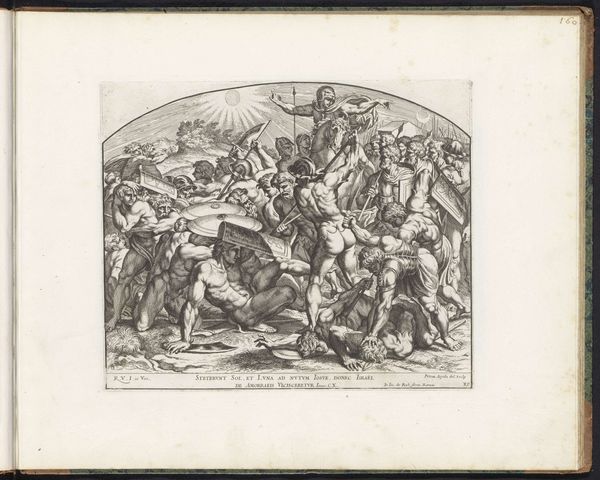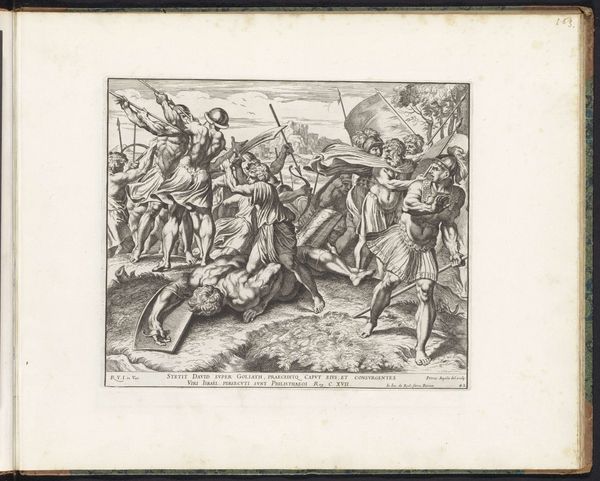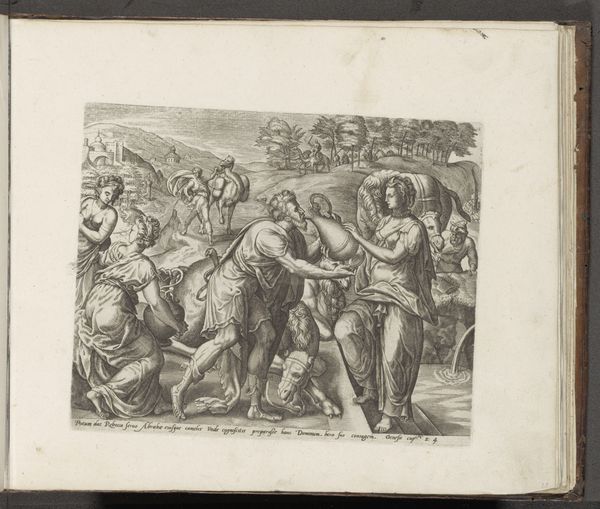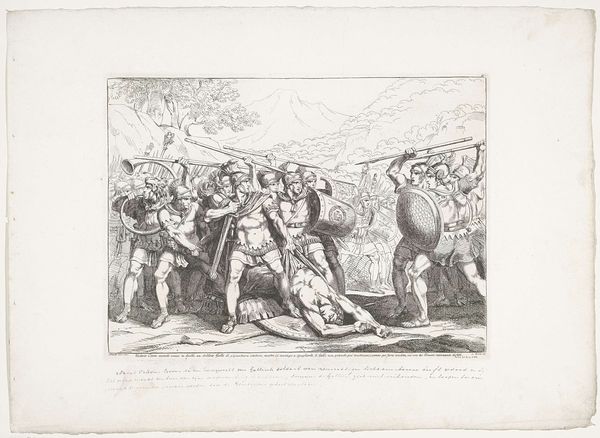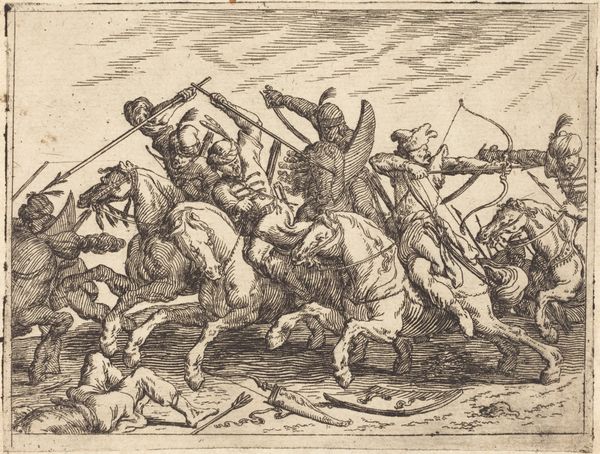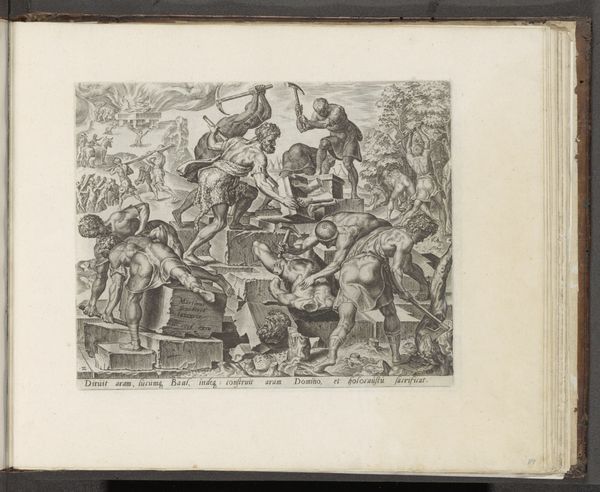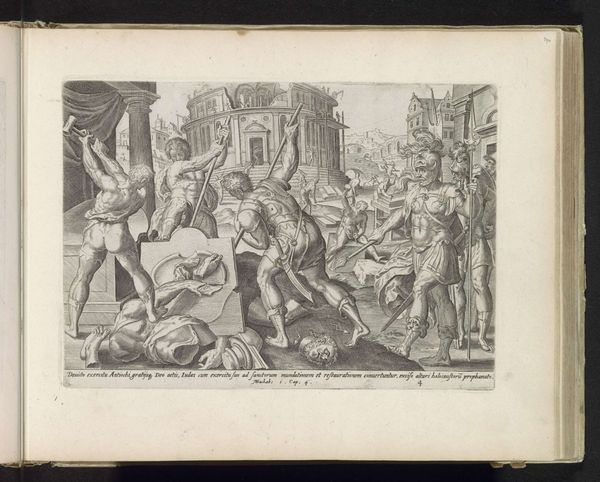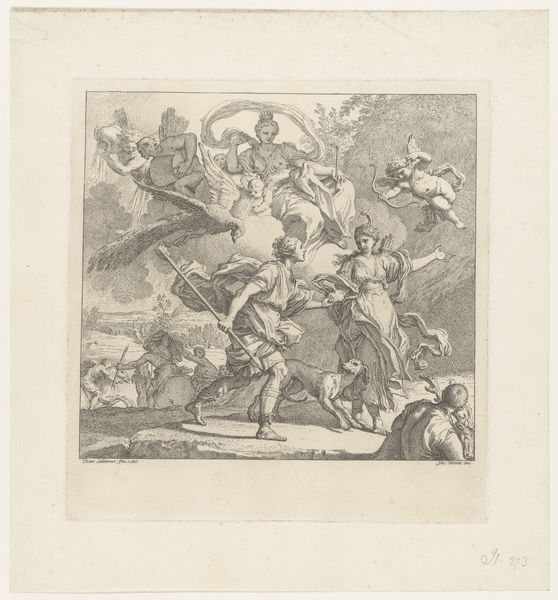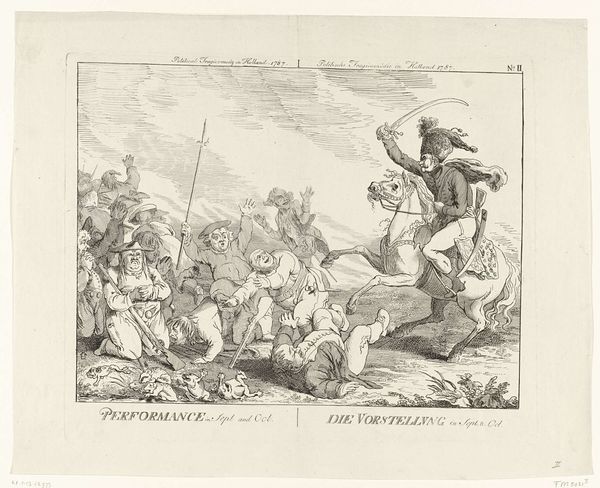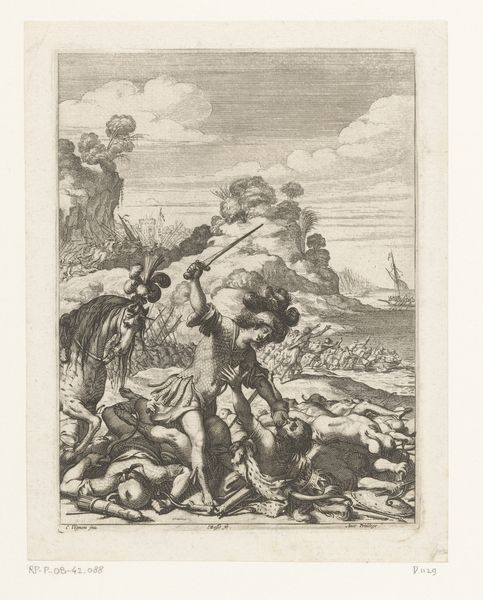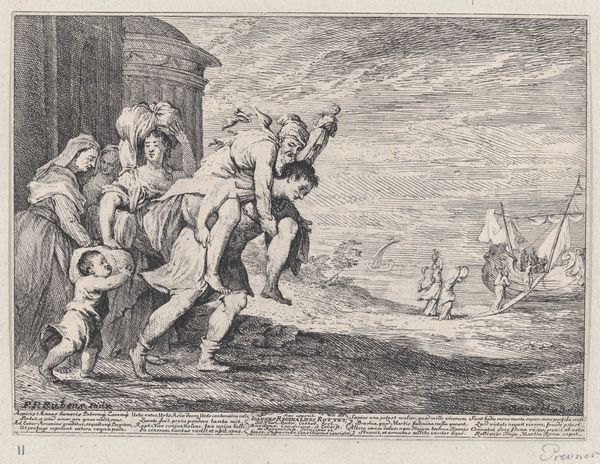
print, engraving
#
neoclacissism
#
narrative-art
# print
#
landscape
#
classical-realism
#
figuration
#
form
#
line
#
history-painting
#
academic-art
#
engraving
Dimensions: height 412 mm, width 493 mm
Copyright: Rijks Museum: Open Domain
Curator: What strikes me first about this piece is the sheer dynamism rendered through engraving. Editor: Absolutely. And given its academic neoclassicism, this print from 1804 by Luigi Sabatelli depicting "Marcus Cassius Scaeva in de slag bij Dyrrhachium," feels so incredibly alive, like we're witnessing this historical battle unfold. The chaos is palpable. Curator: Indeed. Sabatelli clearly aimed to capture a decisive moment. Note how he uses the linear precision of the engraving to model the muscles, to illustrate the textures of armor, and to describe the scene. I find myself drawn to the details, almost to the point of abstraction. What are the specific labor practices for engraving at this scale and complexity? This wasn’t mass production—the intentionality is incredible. Editor: The artist’s hand, isn’t it? That careful deliberation speaks volumes. But looking at it, I wonder about Scaeva’s state of mind—is he determined? Terrified? He's bravely warding off a flurry of arrows! And then, look at the fallen soldiers at his feet, they make for a very grim, somewhat Romantic undercurrent to this supposed classical scene. Curator: The fallen soldiers do contribute to a complex, multi-layered piece. By looking closer at them we must address who had access to view or own prints like this? Whose narrative is being immortalized, and for what purposes? Editor: You're making me think about who *isn't* represented—the common soldier, the realities of ancient warfare. This is history, carefully curated and definitely biased! I wonder if this is designed to ennoble the sacrifice for a select audience? Curator: Certainly, Sabatelli is very invested in idealizing not just form but the perceived ethos and morality around Roman history. The work has political implications! Editor: I never thought I could have feelings about engravings until now. It felt very flat at first glance! Curator: Exactly. Thank you for articulating the inherent paradox of art. The more you investigate a seemingly classical form, the more relevant questions appear regarding the present!
Comments
No comments
Be the first to comment and join the conversation on the ultimate creative platform.
